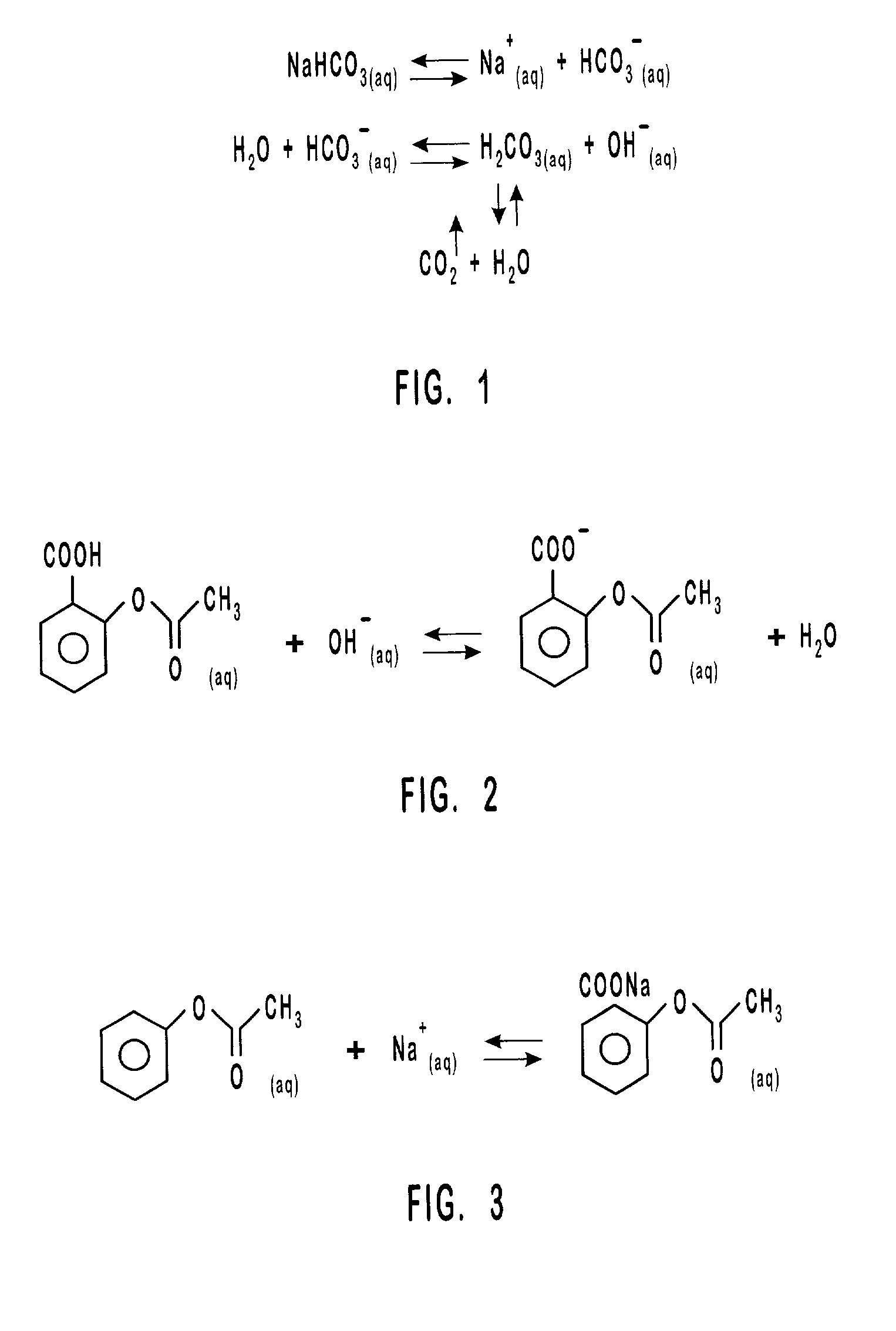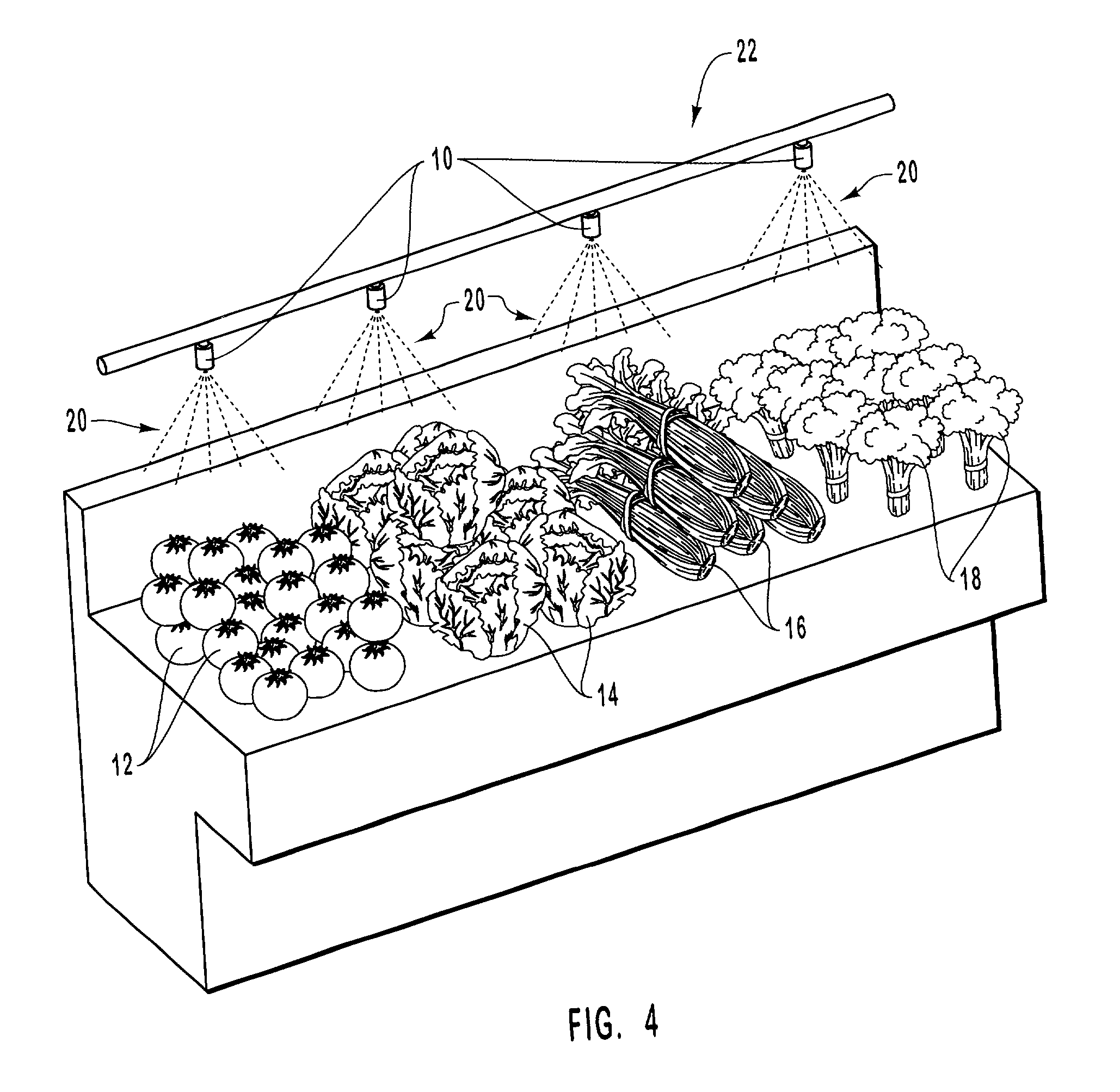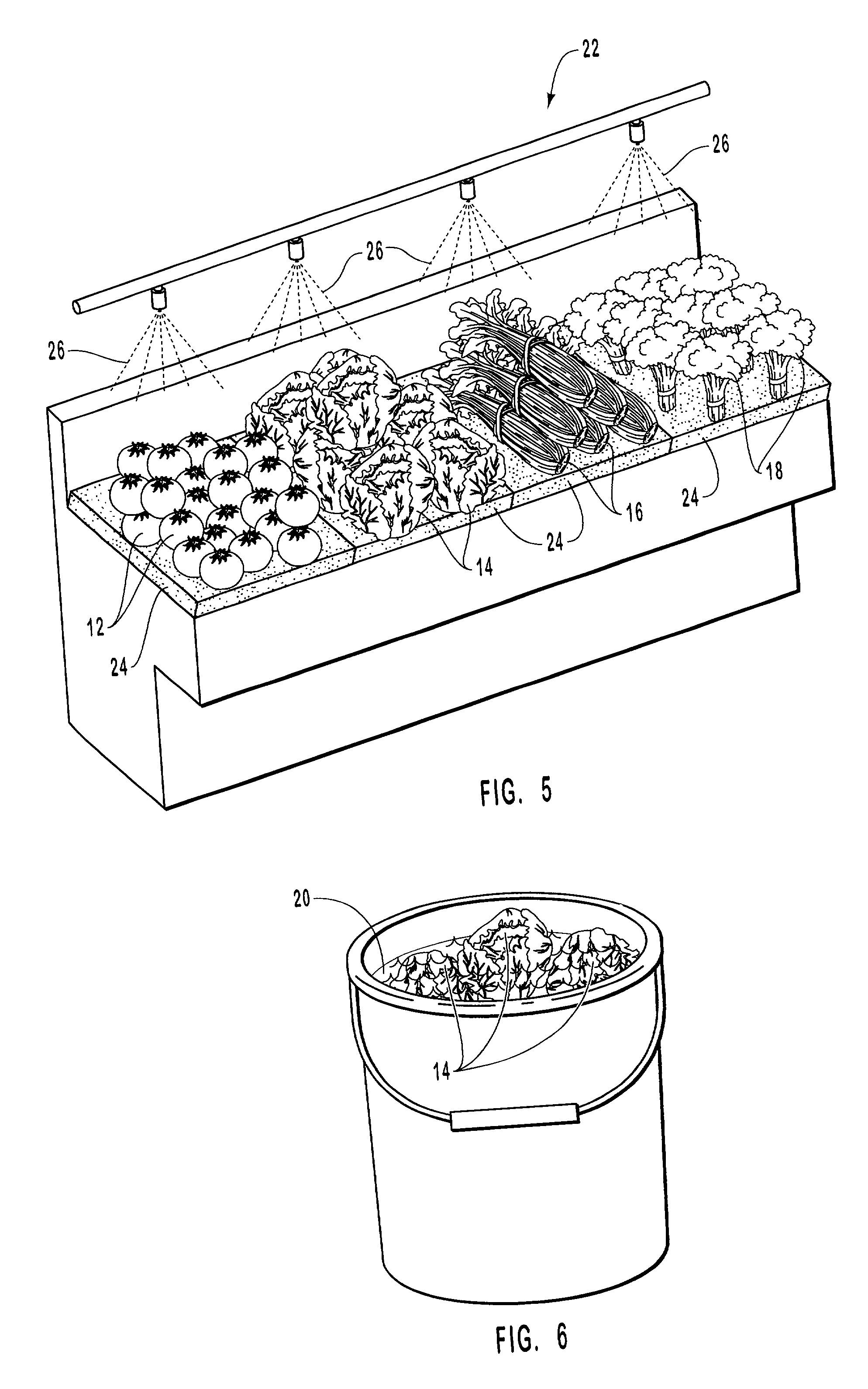Treatment of perishable products using aqueous chemical composition
a technology of chemical composition and perishable products, applied in the field of chemical compositions, can solve the problems of complicated, dangerous, and high cost of carbon dioxide tanks, and achieve the effects of enhancing the growing conditions of live plants, preventing spoilage or bacterial growth in foods, and increasing the level of carbon dioxid
- Summary
- Abstract
- Description
- Claims
- Application Information
AI Technical Summary
Benefits of technology
Problems solved by technology
Method used
Image
Examples
example 1
[0100] In one experiment, it was found that the absorption devices disclosed herein extend the usable life of lettuce one to three days beyond that which is otherwise observed. In particular, the onset of yellowing of lettuce leaves and other degradation of the lettuce was delayed about one to three days when an absorption device carrying the aqueous composition was placed in a refrigerated unit where the lettuce was stored. Such food preservation capabilities can have great advantages in the produce industry. Shipping expenses can be reduced because the urgency of delivering the produce to the retailer is diminished. In addition, the retailer can now receive produce shipments on a weekly basis instead of receiving shipments every day or several times a week as has previously been common.
example 2
[0101] In another experiment, the aqueous composition was applied to an absorption device that was placed directly in a fresh vegetable salad that included a quantity of cut lettuce and other vegetables. It was found that the vegetable salad remained fresh, green, and had an attractive appearance for a longer period of time than has been observed in the absence of the absorption device. Thus, restaurant operators can advantageously use the present invention to prolong the useable life of vegetable salads and obtain costs savings both in the frequency of preparing such salads and in the amount of food that spoils and must be discarded.
example 3
[0102] It has been found that when absorption devices carrying the aqueous compositions are used in an open-air refrigerated produce display case at a grocery store that the shelf life of a variety of vegetables and fruits is extended. In one experiment, a number of absorption devices carrying an aqueous composition of the invention were placed near the rear of an open-air refrigerated produce display case at regular intervals of about two feet. The absorption devices had a dimension of about 2 inches.times.2 inches.times.2 inches.
[0103] In this experiment, the leafy vegetables maintained a fresh and attractive appearance longer than was observed in the absence of the invention. Moreover, the useable life of the vegetables and fruits was prolonged by an amount similar to that described above in Examples 1-2.
PUM
 Login to View More
Login to View More Abstract
Description
Claims
Application Information
 Login to View More
Login to View More - R&D
- Intellectual Property
- Life Sciences
- Materials
- Tech Scout
- Unparalleled Data Quality
- Higher Quality Content
- 60% Fewer Hallucinations
Browse by: Latest US Patents, China's latest patents, Technical Efficacy Thesaurus, Application Domain, Technology Topic, Popular Technical Reports.
© 2025 PatSnap. All rights reserved.Legal|Privacy policy|Modern Slavery Act Transparency Statement|Sitemap|About US| Contact US: help@patsnap.com



